You are looking for information, articles, knowledge about the topic nail salons open on sunday near me garden birds in france on Google, you do not find the information you need! Here are the best content compiled and compiled by the toplist.prairiehousefreeman.com team, along with other related topics such as: garden birds in france garden birds in south west france, france bird list, small birds in france, most common birds in france, birds of france photos, birds of southern france, french birds of prey, finches in france
Birds most likely to be seen in domestic gardens in France include hawfinches (French name grosbec casse-noyaux; Coccothraustes coccothraustes); siskins (tarin des aulnes; spinus spinus); coal tits (mésange noire; periparus ater); sparrows (moineau; passer domesticus); robins (rouge-gorge; erithacus rubecula); …The primary culprit, researchers speculate, is the intensive use of pesticides on vast tracts of monoculture crops, especially wheat and corn. The problem is not that birds are being poisoned, but that the insects on which they depend for food have disappeared.
- House sparrow.
- Starling.
- Blue tit.
- Woodpigeon.
- Blackbird.
- Goldfinch.
- Great tit.
- Robin.
…
Native Bird Species Of France.
| Native Birds of France | Scientific Name |
|---|---|
| Turtledove | Streptopelia turtur |
| Peregrine Falcon | Falco peregrinus |
| Lapwing | Vanellus vanellus |
Table of Contents
What is the most common bird in France?
…
Native Bird Species Of France.
| Native Birds of France | Scientific Name |
|---|---|
| Turtledove | Streptopelia turtur |
| Peregrine Falcon | Falco peregrinus |
| Lapwing | Vanellus vanellus |
What is the most common bird in the garden?
- House sparrow.
- Starling.
- Blue tit.
- Woodpigeon.
- Blackbird.
- Goldfinch.
- Great tit.
- Robin.
Why are there so few birds in France?
The primary culprit, researchers speculate, is the intensive use of pesticides on vast tracts of monoculture crops, especially wheat and corn. The problem is not that birds are being poisoned, but that the insects on which they depend for food have disappeared.
What is the national bird of France?
The Latin word “gallus” means both “rooster” and “inhabitant of Gaul”. Certain ancient coins bore a rooster, but the animal was not used as the emblem of the tribes of Gaul. Gradually the figure of the rooster became the most widely shared representation of the French people.
What kind of birds are in France?
| English | Latin | French |
|---|---|---|
| Common Nightingale | Luscinia megarhynchos | Rossignol philomèle |
| Common Pheasant | Phasianus colchicus | Faisan de Colchide |
| Common Pochard | Aythya ferina | Fuligule milouin |
| Common Quail | Coturnix coturnix | Caille des blés |
What are the top 10 most common birds?
- Mourning Dove (35% frequency)
- Northern Cardinal (34%)
- American Robin (33%)
- American Crow (32%)
- Blue Jay (28%)
- Song Sparrow (25%)
- Red-winged Blackbird (25%)
- European Starling (25%)
How can I identify a bird I saw?
A new mobile app can help you identify it. The Merlin Bird Photo ID mobile app can recognize hundreds of North American species it “sees” in photos, then show you a list of birds that match your description and are expected in your area.
What are those small brown birds called?
Small brown birds at your feeder are likely to be sparrows or female finches. However, they might be female blackbirds. They might be wrens!
What bird is similar to a Wren?
Some brown birds commonly confused with male or female House Sparrows include: American Tree Sparrow, Carolina Wren, Cassin’s Finch, Chipping Sparrow, Cowbird, House Wren, Eurasian Tree Sparrow, Harris’s Sparrow, House Finch, Purple Finch, Rose-breasted Grosbeak (female), Junco, Song Sparrow, White-crowned Sparrow, …
Which bird is known as garden bird?
House sparrows are probably the most beloved birds for a gardener, since without their playing around, a garden looks barren and lifeless.
What is the most common garden bird 2021?
The house sparrow once again kept its top position as the most commonly spotted garden bird, with more than 2.6 million recorded sightings throughout the weekend, and an average of 4.2 birds per garden. In second place was the blue tit followed by starling.
Do you get robins in France?
The robin features prominently in British folklore and that of northwestern France, but much less so in other parts of Europe.
Are there blue jays in France?
Eurasian jays can be found throughout France, a bird of the countryside anywhere that there are oak woodlands.
Does France have owls?
In France there are 9 species of Owl and unlike the UK they have a name prefix that divides owls with visible ear tufts from those without visible ear tufts. It seems even most French people are unaware of this as they only learn the name and not the reason why.
What birds do they eat in France?
Wild ortolan buntings are hunted in southwest France in a cultural gastronomic tradition dating back to Roman times. After capture, the birds are fattened up in a cage before being drowned in Armagnac. Then they are plucked, cooked, and eaten whole, bones and all – everything but the beak.
Does France have crows?
In France, though, the wily crow is getting a makeover. Puy du Fou, a historical theme park in the Loire region about four hours from Paris, has trained six crows to pick up cigarette butts and bits of trash and dump them in a box. Mon Dieu! Are the pigeons of Paris next?
Are doves in France?
During the spring migration, one location, in south-west France, is a particularly interesting spot to observe the active migration of turtle doves. This spot, the Pointe de Grave, on the northern tip of the Medoc peninsula, is a spring migration hotspot in Europe with nearly 300,000 birds counted each year.
Are there ducks in France?
…
France.
| ANSERIFORMES: Anatidae | ||
|---|---|---|
| Snow Goose | Anser caerulescens | Rare/Accidental |
| Mallard | Anas platyrhynchos | |
| American Black Duck | Anas rubripes | Rare/Accidental |
| Northern Pintail | Anas acuta |
Public invited to annual garden bird count in France
- Article author: www.connexionfrance.com
- Reviews from users: 29393
Ratings
- Top rated: 3.2
- Lowest rated: 1
- Summary of article content: Articles about Public invited to annual garden bird count in France Updating …
- Most searched keywords: Whether you are looking for Public invited to annual garden bird count in France Updating
For the seventh consecutive year, the French public is being asked to help with the national garden bird counting event from bird protection group la Ligue pour la Protection des Oiseaux (LPO). - Table of Contents:
Native Bird Species Of France – WorldAtlas
- Article author: www.worldatlas.com
- Reviews from users: 26569
Ratings
- Top rated: 3.4
- Lowest rated: 1
- Summary of article content: Articles about Native Bird Species Of France – WorldAtlas Updating …
- Most searched keywords: Whether you are looking for Native Bird Species Of France – WorldAtlas Updating Hundreds of bird species call France home. In this article, we take a look at just a few of these French avian species.
- Table of Contents:
Native Bird Species Of France
Threats To The Native Birds Of France
Native Bird Species Of France
Related
More in Environment
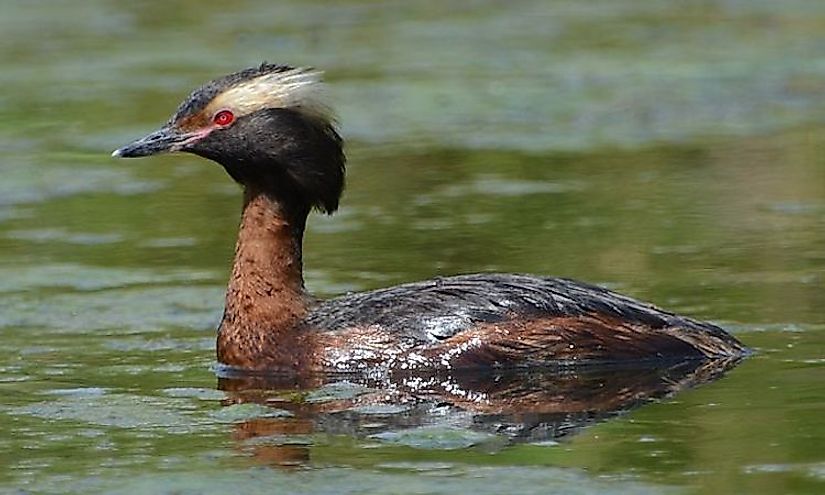
How to identify COMMON GARDEN BIRDS – Including their songs – YouTube
- Article author: www.youtube.com
- Reviews from users: 19290
Ratings
- Top rated: 5.0
- Lowest rated: 1
- Summary of article content: Articles about How to identify COMMON GARDEN BIRDS – Including their songs – YouTube Updating …
- Most searched keywords: Whether you are looking for How to identify COMMON GARDEN BIRDS – Including their songs – YouTube Updating A beginners guide to common garden birds of the UK, including their songs and tips on how to identify them. There are more than 2 million goldfinches in the …how to identify garden birds, how to identify garden birds for beginners, how to identify birdsong, How to identify garden birds by their song, bird songs for beginner, common garden birds, how to identify common birds, how to identify common garden birds for beginners, common garden birds for beginners, UK garden birds, british garden birds, garden birds of the uk, Garden birds, birdwatching in the garden, how to identify birds, how to identify british birds
- Table of Contents:

24 British Birds You Can Find In Your Garden This Spring
- Article author: www.countryliving.com
- Reviews from users: 31043
Ratings
- Top rated: 3.7
- Lowest rated: 1
- Summary of article content: Articles about 24 British Birds You Can Find In Your Garden This Spring Updating …
- Most searched keywords: Whether you are looking for 24 British Birds You Can Find In Your Garden This Spring Updating There’s a huge range British birds to see, whether in your garden or out and about. Here we go through 24 of the most common yet beautiful British birds.
- Table of Contents:
24 British birds to identify
15 bird feeders to buy right now

‘Catastrophe’ as France’s bird population collapses due to pesticides | France | The Guardian
- Article author: www.theguardian.com
- Reviews from users: 48444
Ratings
- Top rated: 4.7
- Lowest rated: 1
- Summary of article content: Articles about ‘Catastrophe’ as France’s bird population collapses due to pesticides | France | The Guardian Updating …
- Most searched keywords: Whether you are looking for ‘Catastrophe’ as France’s bird population collapses due to pesticides | France | The Guardian Updating Dozens of species have seen their numbers decline, in some cases by two-thirds, because insects they feed on have disappeared
- Table of Contents:
Most popular
Most popular

Birds – a french garden
- Article author: afrenchgarden.wordpress.com
- Reviews from users: 27507
Ratings
- Top rated: 3.3
- Lowest rated: 1
- Summary of article content: Articles about Birds – a french garden I have admired many dovecotes in beautiful gardens in the UK and seen pigeonnières and colombiers in France. “La pigeonnière” is usually associated with other … …
- Most searched keywords: Whether you are looking for Birds – a french garden I have admired many dovecotes in beautiful gardens in the UK and seen pigeonnières and colombiers in France. “La pigeonnière” is usually associated with other … Posts about Birds written by thelivesofk and afrenchgarden
- Table of Contents:
Posts navigation
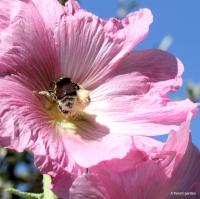
Discover the most common birds in gardens in France – Exploratory Ecology
- Article author: www.explorecology.com
- Reviews from users: 48306
Ratings
- Top rated: 3.6
- Lowest rated: 1
- Summary of article content: Articles about Discover the most common birds in gardens in France – Exploratory Ecology Discover the most common birds in gardens in France with our latest veo! #oiseau #oiseaux #bird #birds #animal #nature #animals … …
- Most searched keywords: Whether you are looking for Discover the most common birds in gardens in France – Exploratory Ecology Discover the most common birds in gardens in France with our latest veo! #oiseau #oiseaux #bird #birds #animal #nature #animals …
- Table of Contents:
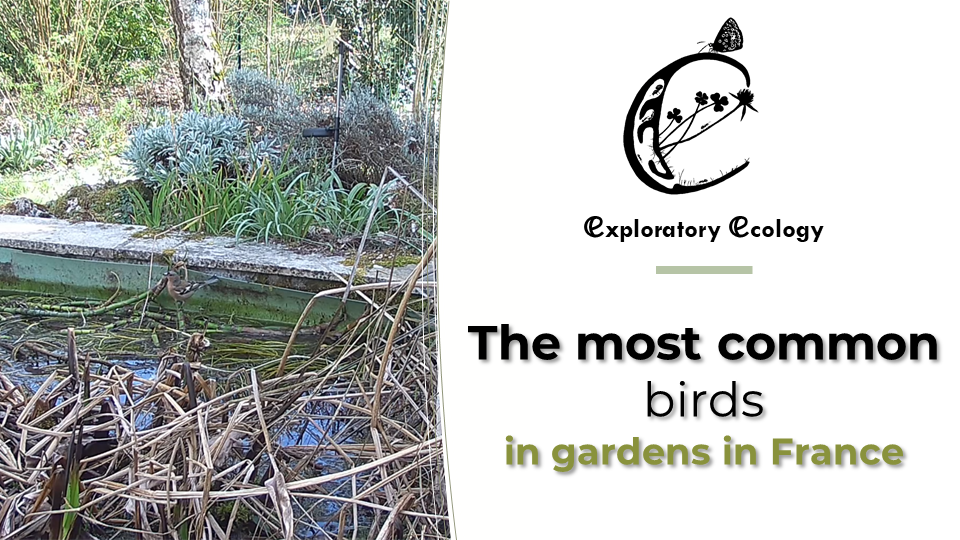
Garden Birds in Poitou-Charentes | Poitoucharentesinphotos
- Article author: poitoucharentesinphotos.wordpress.com
- Reviews from users: 15470
Ratings
- Top rated: 3.8
- Lowest rated: 1
- Summary of article content: Articles about Garden Birds in Poitou-Charentes | Poitoucharentesinphotos Great Tit · Chaffinch male · Chaffinch female · Hoopoe · Black Redstart · Redstart male · Great Spotted Woodpecker · Dunnock or Hedge Sparrow. …
- Most searched keywords: Whether you are looking for Garden Birds in Poitou-Charentes | Poitoucharentesinphotos Great Tit · Chaffinch male · Chaffinch female · Hoopoe · Black Redstart · Redstart male · Great Spotted Woodpecker · Dunnock or Hedge Sparrow. These are photos of birds which I have seen in the garden or within 5 minutes walk of the garden. Most of the photos were taken in my garden or close by but a few were taken in England. However all the photos were taken by myself, no copies. We are blessed by having a garden…
- Table of Contents:
~ An individual focus on the region…… Un accent particulier sur la region

Pictures of birds de France – page 0
- Article author: www.oiseaux.net
- Reviews from users: 14980
Ratings
- Top rated: 4.7
- Lowest rated: 1
- Summary of article content: Articles about Pictures of birds de France – page 0 Mésange boréale. Willow Tit ; Fauvette passerinette. Western Subalpine Warbler ♂ ; Loriot d’Europe. Eurasian Golden Oriole juvenile ; Rollier d’Europe. European … …
- Most searched keywords: Whether you are looking for Pictures of birds de France – page 0 Mésange boréale. Willow Tit ; Fauvette passerinette. Western Subalpine Warbler ♂ ; Loriot d’Europe. Eurasian Golden Oriole juvenile ; Rollier d’Europe. European … Pictures of birds de France, page 0/. Reverse aging : 56708 photos.
- Table of Contents:
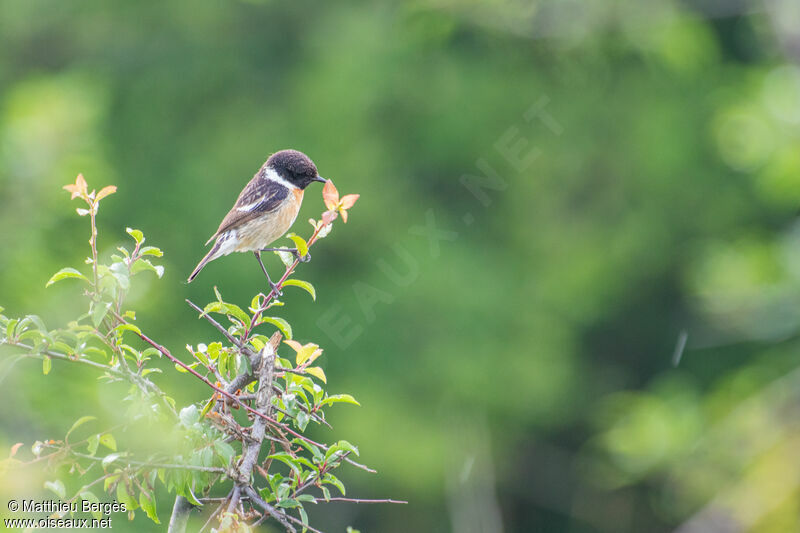
Birds in France – About-France.com
- Article author: about-france.com
- Reviews from users: 17232
Ratings
- Top rated: 3.8
- Lowest rated: 1
- Summary of article content: Articles about Birds in France – About-France.com Among the most spectacular birds to see in France are the massive griffon vultures that have been reintroduced in the Alps and southern Massif Central (Tarn … …
- Most searched keywords: Whether you are looking for Birds in France – About-France.com Among the most spectacular birds to see in France are the massive griffon vultures that have been reintroduced in the Alps and southern Massif Central (Tarn … Bird life in France – Many parts of France are a paradise for ornithologists, and many once threatened species are now making a comebackwild, France, nature, natural environment, open spaces, wide, great outdoors, hiking, ramblers, mountains, Ardennes, Champagne, Morvan, Massif Central, Aubrac, Causses, Cantal, Aveyron, Pyrenees, Alps, Vercors, Jura
- Table of Contents:
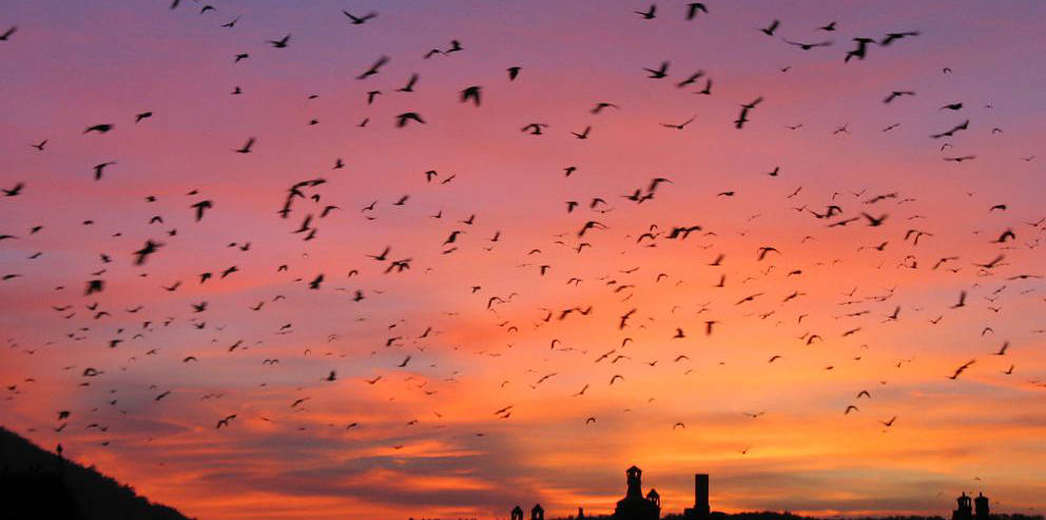
The birds of Southwest France say it’s spring – Life on La Lune
- Article author: vanessafrance.wordpress.com
- Reviews from users: 38188
Ratings
- Top rated: 4.5
- Lowest rated: 1
- Summary of article content: Articles about The birds of Southwest France say it’s spring – Life on La Lune The weather has been damp and chilly, quite unlike the temperatures a fortnight ago, when we worked in the garden in shirtsleeves. Today, at … …
- Most searched keywords: Whether you are looking for The birds of Southwest France say it’s spring – Life on La Lune The weather has been damp and chilly, quite unlike the temperatures a fortnight ago, when we worked in the garden in shirtsleeves. Today, at … These cowslips have been around for several weeks, which is early. But it seems too early to call it spring… Today marks the spring equinox. The birds think it’s spring, although this week we have been pitched back into winter. The weather has been damp and chilly, quite unlike the temperatures a fortnight ago, when…
- Table of Contents:
A journey through life in Southwest France
Repelling invaders
A rare sighting
Birds in decline
You might also like
Post navigation
16 comments
Follow Life on La Lune by email
Life on La Lune topics
Search Life on La Lune
“Wonderful”
“A delight to read”
“A compelling story”
“A beautiful piece of historical fiction”
“Beautifully written and totally engaging”
Page visits
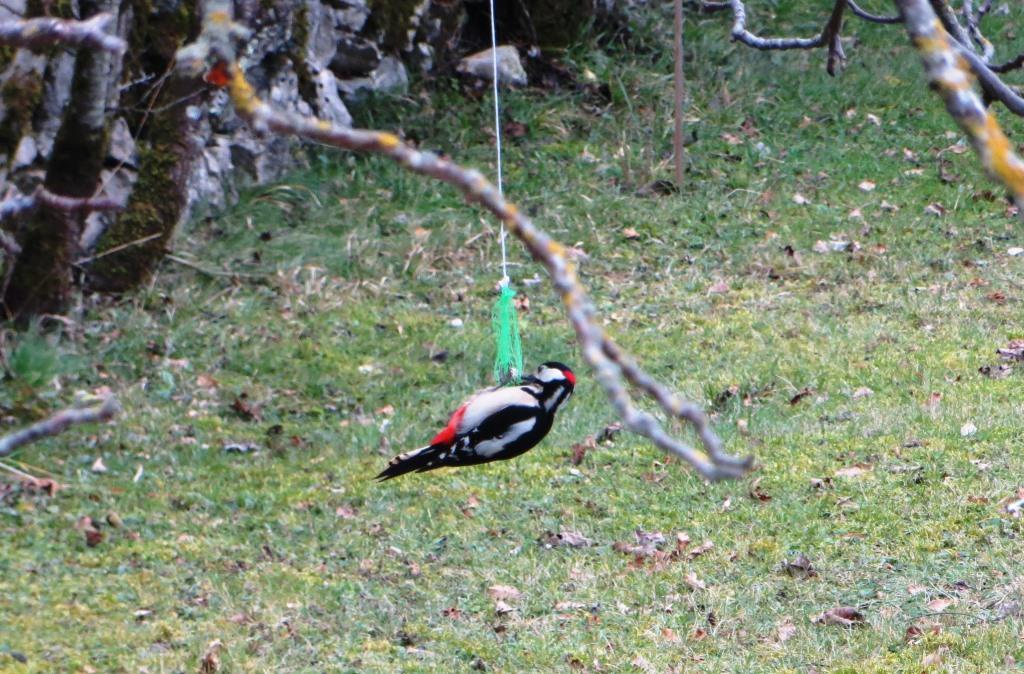
Birds in France
- Article author: wildlifeinfrance.com
- Reviews from users: 8380
Ratings
- Top rated: 3.5
- Lowest rated: 1
- Summary of article content: Articles about Birds in France The Common Crane is one of the largest birds in Europe with a wingspan of 2 meters and a weight of 4 – 6 kg. Overall plumage is a nearly uniform grey with long … …
- Most searched keywords: Whether you are looking for Birds in France The Common Crane is one of the largest birds in Europe with a wingspan of 2 meters and a weight of 4 – 6 kg. Overall plumage is a nearly uniform grey with long … French,Snakes,Mammals,Frogs,Toads,Newts,Birds,Insects,Orchids,wildlifeA selection of Birds to be found in France, with some favourites
- Table of Contents:

See more articles in the same category here: https://toplist.prairiehousefreeman.com/blog/.
Public invited to annual garden bird count in France
Together with the natural history museum le Muséum national d’Histoire naturelle (MNHN), the LPO is asking the general public to take part in the bird counting event on the last weekend of January (January 26 and 27).
Taking part can help scientists understand the current state and health of the national bird population, and gauge the impact of factors such as local agriculture and climate.
(Coal tit)
The principle is simple: To count how many birds, and of what species, you can see in or from a given space – such as a garden, local square, school playground, balcony or urban park – in a selected one-hour window.
To take part, choose one of the two days, and a good hour to observe – such as mid-morning or early-afternoon, when temperatures will be slightly higher and birds are likely to be out more.
Count and note down each bird you see in that one-hour timeframe, and then send your data to the event’s website, l’Observatoire des oiseaux des jardins : www.oiseauxdesjardins.fr.
Anyone can take part, and you do not have to be part of the LPO to do so; many birds can be identified with a quick search online.
Birds most likely to be seen in domestic gardens in France include hawfinches (French name grosbec casse-noyaux; Coccothraustes coccothraustes); siskins (tarin des aulnes; spinus spinus); coal tits (mésange noire; periparus ater); sparrows (moineau; passer domesticus); robins (rouge-gorge; erithacus rubecula); chaffinches (pinson; fringilla coelebs) and bullfinches (bouvreuil; pyrrhula).
(Chaffinch / Bullfinch / Robin / Sparrow)
At this point in the year, birds may often head to private gardens in search of food,as the local countryside may be more bare than usual – especially in agricultural areas.
Last year, the study found that birds were especially abundant in gardens, with an average of 38 birds counted per garden – amounting to 300,000 in total.
Yet, studies have shown that since autumn 2018, the number of birds in people’s gardens appears to have dropped. Between November and mid-December, there were almost 50% fewer birds (40,000) compared to the autumn of 2017 (74,000).
(Hawfinch)
The LPO suggests two reasons for this: firstly, that temperatures did not drop very low (and still have not) across the country, so birds migrating from the North of Europe may have delayed their journey.
Secondly, higher temperatures may mean that food is more plentiful everywhere, meaning birds have less reason to come into private gardens seeking extra nourishment.
Native Bird Species Of France
France is home to relatively untouched habitat which supports a large variety of wildlife, birds, and animals. The country consists of a large forested area where a large species of native animals such as Wild Boar and Red squirrel are common. France is also home to several introduced species from other parts of the world. The metropolitan France has more than 541 recorded species of birds while the entire country has over 800 birds’ species. The birds’ species in the country include the introduced species and the species that have migrated to the country from the neighboring European countries.
Native Bird Species Of France
Horned Grebe
Horned Grebe is a small waterbird in the family Podicipedidae. The bird has a red-and-black alternate plumage. Horned Grebe has a relatively long neck and a flat forehead with a rear crown of a black feather. The beak is straight and pointed with a white tip. A mature grebe is 30 to 38 cm with a wingspan of 55 to 75 cm and weighs a maximum of 570 g. A young grebe begins calling in a shrill peeping voice similar to a domestic chick. Horned Grebe feeds on aquatic arthropods and fish with its large feet helping it to maneuver through the water. It feeds in a small group of a maximum of five birds. Horned Grebe is a monogamous bird with an elaborate mating routine.
Eurasian Wryneck
Eurasian Wryneck is a species in the family woodpecker. The bird is a migratory species that winters in Africa and Southern Asia. Eurasian Wryneck got its name from English name because of its ability to turn its head up to 180 degrees. An adult bird can grow to 16.5 cm in length with a short bill. The upper part is barred and molted in brownish to the blackish bar while the underpart is cream with few brown spots. The tail is rounded and gray sparkled with brown. Eurasian Wryneck feeds on ants, beetles, and spiders. Although it spends most of its time on tree branches, it forages on the ground. It builds its nest on tree trunks and crevices on walls.
Cormorant
Cormorant is a widespread family of seabirds that breeds much in the Old World and Cost of North America. It is a large black bird which weighs approximately 1.5kg. The male Cormorant is slightly bigger than the female. It has a long tail and a white-patched thigh and throat. Its bill is thick and lacks the crest. Cormorant is a silent bird but makes guttural noise in its breeding colony. It nests on the cliff or in trees. Cormorant feeds in shallow water by bringing its prey to the surface. It feeds mainly on fish.
Alpine Swift
Alpine Swift is a migratory bird that winters mostly in the Southern Africa. It has small legs which are only used for clinging to the vertical surface. It builds its nest in colonies on the cliff hole or caves. It can return to the same site year after year and rebuild its nest when necessary. A mature Alpine Swift measures 20 to 23 cm in length and weighs about 100 g. Alpine Swift spends most of its time on air and feeds on insects.
Threats To The Native Birds Of France
The majority of birds in France are listed as least concern by the IUCN because of their distribution and population. There is no significant threat to most of these birds. The migratory birds are the most affected during winter as most of them migrate as far as Africa and Asia with few returning to France during summer. An outbreak of a disease in an area may affect a large flock and spreads very quickly to other regions due to the movement of birds.
24 British Birds You Can Find In Your Garden This Spring
We are fortunate to have many beautiful British birds. Some of them visit our gardens, some of them you’ll only see out in the wild and some British birds favour our cities – but whatever the species, we can help to make birds’ lives easier by protecting their habitats and providing extra resources.
Before we look at our list of 24 common British birds and how to identify them, here are the answers to some common garden bird questions:
1. What are the most common garden birds?
According to The Big Garden Birdwatch 2020, the top 10 most commonly sighted birds are:
House sparrow Starling Blue tit Woodpigeon Blackbird Goldfinch Great tit Robin Long-tailed tit Magpie
Jacky Parker Photography Getty Images
2. What is the rarest British bird?
According to the Woodland Trust, the rarest birds in the UK include:
Hawfinch Lesser-spotted woodpecker (not to be confused with the greater-spotted woodpecker) Nightingale Capercaillie Pied flycatcher Willow tit Nightjar Spotted flycatcher Wood warbler Goshawk Lesser redpoll
Sadly, a number of once common birds are now also in decline due to issues around climate change and habitat loss. House sparrows, starlings, blackbirds and robins are all in decline according to the Big Garden Birdwatch.
3. What is the best bird food for garden birds?
It is important to help British birds get the nutrition they need by topping up our bird feeders and putting food out for them in our gardens, especially during the winter when natural food sources, like berries, are harder to come by.
Garden birds like to eat peanuts (not salted or human peanut snacks, but those especially for birds) sunflower seeds, cooked rice (not salted) and fruit. You can also make your own fat balls packed with a variety of nutritious snacks. Read our guide on how to make them here, or follow Matt Baker’s example of turning a whole tree into a bird buffet.
4. Is bread bad for birds?
It is not harmful to feed bread to garden birds but it is important to note that, if the bread is in large chunks and is dry, it can be hard for them to digest. It is better to put out moistened crumbs.
Bread is also not very high in nutritional value so it should not be the only option you put out for the birds. Peanuts, seeds and fat balls are better bird foods.
5. What should you not feed birds?
Avoid putting food out for birds that is too salty or is showing any signs of mould. Birds should also not eat cooking fat as it can damage their feathers. Other bird foods to avoid include dog or cat biscuits, as they are too dry, and milk, which is hard for them to digest.
24 British birds to identify
1. Robin
paul mansfield photography Getty Images
One of the most common British birds you’re likely to find perching on your garden fence is the robin. Famous for its bright red chest, robins are found all year round but especially during the winter months. They are an iconic Christmas bird and are popular on festive cards. Make sure you keep your bird feeders well-stocked to ensure the robin has plenty to eat.
2. Great tit
Santiago Bañón Getty Images
Arguably one of the most beautiful British garden birds, the great tit is the largest of the UK tit family. If you’re hoping to spot one of these in your garden, keep your ears open for its sweet two-syllable song — it’s a giveaway.
3. Blue tit
Mark L Stanley Getty Images
With its vibrant coloured body, the blue tit is one of the UK’s most attractive garden visitors. During winter, make sure to keep bird feeders filled with fatty foods as these sweet birds will find it hard to locate anything to fill them up. You’ll want to keep your camera close by: it’s too pretty not to capture.
4. Coal tit
Caroline Gauvin Getty Images
Darker than its tit relatives, the coal tit is still beautiful. In winter, they can be seen with other tits on the lookout for food together. It has a black head and a white patch on the back of its neck. They love visiting garden feedershttps://www.countryliving.com/….
5. Long-tailed tit
Westend61 Getty Images
Recognisable by its long tail and pinkish body, the long-tailed tit likes to be in a flock of up to 20 tits.
6. Wood pigeon
Nicky Tomblin / EyeEm Getty Images
While we all wish our gardens would be teeming with beautiful British birds that wake us with the sound of song, it’s quite common to find pigeons instead. The breed you’re likely to spot in the UK is the wood pigeon, which you can identify thanks to its grey and white chest. Their cooing sound will also give them away if they’re hiding in your trees.
7. Collared Dove
MikeLane45 Getty Images
Similar to a pigeon but smaller, the collared dove is easily identifiable by the black ring around its neck. They also have red-tinted eyes and feet. Their song is a monotonous cooing.
8. Blackbird
Corinne von Nordmann Getty Images
Another bird you’re likely to spot is the blackbird, which is usually found singing a mellow song. While the males have black feathers, females are more likely to be brown. These birds have little fear and will eat whatever they find in your garden. With a sturdy, long-tailed thrush and yellow ring at the eyes, they’re not hard to miss.
9. House sparrow
Mark L Stanley Getty Images
These small, noisy British birds are commonly found in parks and gardens across the UK. Thanks to their streaky brown bodies, you should be able to identify them fairly quickly. They’re also particularly friendly with an all-year-round garden presence.
10. Starling
Susan Walker Getty Images
These fast and direct birds move with confidence, both in the sky and on the ground. Starlings spend a lot of time flying in large murmuration groups (which you are likely to spot due to their large numbers). Their flocks provide safety for the birds, especially from any predators. Plus, flying in their groups helps to keep them warm during winter.
11. Magpie
David C Stephens Getty Images
This black, white and blue bird is a clever one. Often seen in pairs, they are known for being predators, scavengers and pest-destroyers (and for stealing anything with a gold-like shine). From a distance, you’ll hear their chatter, but will be able to tell them apart from others by their regal, shimmering blue tail. While they might have a reputation as the bad boy in the world of birds, they’re some of the most friendly around.
12. Goldfinch
Mike Turtle Getty Images
Astoundingly beautiful, the Goldfinch is easily recognised by its distinct scarlet face and bright yellow wing patch. If you’ve got bird feeders in the your garden, top them up with sunflower hearts and nyjer seeds: snacks the species love to feed on for strength. Thanks to their long beaks they are also able to extract worms wiggled deep in the ground.
13. Greenfinch
Rui Cardoso Getty Images
With its sweet twittering song, pop of vibrant green and small body, the Greenfinch truly is a wonderful character to find in your garden. They love to visit birdtables and feeders, so be sure to keep these regularly topped up. While they’re more likely to be seen from February onwards, some may even appear in your garden as early as January.
14. Bullfinch
Daniil Komov / 500px Getty Images
Striking and completely beautiful, the bullfinch is a real treat for anyone who spots it outside. Its bright orange tummy will give him away, so be sure to keep a look out for the dash of colour amongst the trees. The shy bullfinch is rarely seen in most gardens, and only heads to areas where they can find suitable thick cover. If you’re out on a walk, you may get lucky at spotting one of these in sitting high in woodland areas.
15. Wren
Images from BarbAnna Getty Images
These round, plump, small birds can spotted around shady areas, where you’ll find them hunting for food. With a perky tail and powerful song, they’re not hard to miss. Wrens are one of the most common breeding birds in the UK, with around 8.6 million breeding wren territories.
16. Carrion Crow
Susan Walker Getty Images
Often alone or in pairs, carrion crows are jet black in appearance. They are one of the cleverest British birds and are very adaptable to different surroundings. As their name suggests, they eat carrion, as well as insects, worms, seeds, fruit, eggs and scraps.
17. Jackdaw
Getty Images
Also black, the jackdaw can be told apart from a crow thanks to being slightly smaller with a silver sheen on its head. They like to nest in chimneys, tree holes and building crevices.
18. Jay
James Warwick Getty Images
Jays, part of the crow family, are larger birds – a similar size to a magpie. They can be found all over the UK but love to dwell under the cover of woodland so are less brazen in open spaces and gardens. They are identifiable by their blue wings. They love acorns and can often be found burying them in autumn, in preparation for winter.
19. Goldcrest
Michael Roberts Getty Images
The goldcrest is the smallest British bird and can be identified by the yellow stripe on its head. In males, this stripe has an orange centre. Due to their size, they only eat small meals like spiders, moth eggs and small insects. Their tiny beaks mean they can get into very tight gaps to forage.
20. Dunnock
Images from BarbAnna Getty Images
Solitary birds, dunnocks can usually be found hopping or shuffling near flower beds or shrubs. They are generally quiet birds, unless two males meet in which case wing-flicking and loud noises commence.
21. Chiffchaff
Volodymyr Kucherenko Getty Images
This small bird is named after the noise it makes: ‘chiff-chaff, chiff-chaff’. Chiffchaffs are migrating birds and can be seen in the UK in the summer to breed, but are absent in the winter when they head to warmer climes.
22. Great Spotted Woodpecker
S.Mcgrath Getty Images
Great spotted woodpeckers are bold red, white and black. Males have a red patch on the back of their heads as well as on their lower bodies. They have very hard, strong beaks which allow them to peck nesting holes into tree trunks and shock-absorbent skulls which mean they can withstand it. They can be found in woodland, parks and gardens and you are likely to hear one tapping away before you spot it.
23. Lesser Spotted Woodpecker
phototrip Getty Images
Lesser spotted woodpeckers are smaller than their greater cousins and have black and white stripes on their backs. They are sadly in decline in the UK and live in mature-woodland where they rely on old, dead or rotting trees.
24. Green Woodpeckers
Gary Chalker Getty Images
These woodpeckers look totally different from their greater and lesser spotted counterparts with green bodies and red heads. Males also have a red streak on their cheeks. They are the biggest woodpecker in the UK.
Like this article? Sign up to our newsletter to get more articles like this delivered straight to your inbox.
SIGN UP
Love what you’re reading? Enjoy Country Living magazine delivered straight to your door every month with Free UK delivery. Subscribe now to save on the shop price + get instant digital access to the latest issue!
SUBSCRIBE
So you have finished reading the garden birds in france topic article, if you find this article useful, please share it. Thank you very much. See more: garden birds in south west france, france bird list, small birds in france, most common birds in france, birds of france photos, birds of southern france, french birds of prey, finches in france

